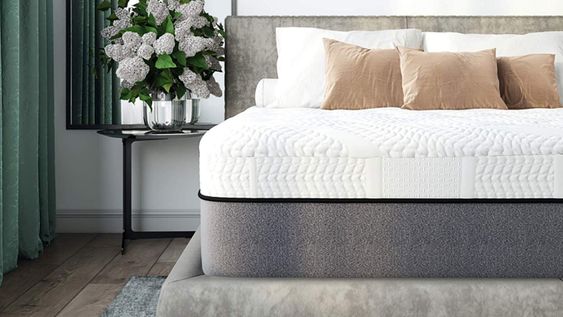It is a decisive purchase, on which the quality of our sleep will depend. And this commits us to over several years since it is recommended to renew your bedding every 8 to 10 years. It deserves to take some precautions, right? Here are the three mistakes to avoid according to the professionals to choose the mattress best suited to your morphology and your sleep.
Mistake 1: not trying the mattress before adopting it
There is no miracle recipe. A comfortable bed guarantees restful sleep. But comfort is subjective. The only way to find a mattress made for you is to test several of them in real conditions, that is to say by lying on them. You will first judge its “reception”, that is to say, its degree of penetration. Everyone has their own preferences, but to ensure their resilience, stick your fist in them: you must achieve this gradually. Then make sure of his support by moving, sometimes lying on your back, side, or belly, as we do naturally when we sleep: we change position on average sixty times a night! No a priori compared to a mattress technology rather than another: your only guide must be the well-being felt. The mattress must be able to follow and accompany your movements, without forcing the muscles to efforts that would cause micro-awakenings and therefore lower quality sleep. It must also be ergonomic to avoid areas of rupture, the cause of back pain. To ensure that it fits your curves as well as possible, there is a very simple test: lying on your back, you try to pass your hand under the lower part of your kidneys. The more difficult, the better.
Mistake 2: do not favor a Queen size when there are two of you
If we sleep as a couple, we try the mattress together, while moving, to check that it suits us in terms of comfort as indicated above, and also that it gives us sleeping independence. That is to say, it is able to absorb the pressure of each body without propagating the vibrations, otherwise, the movements of one disturb or even wake up the other. Obviously, the size of the bed impacts. According to a clinical study by Acticouple, carried out from recordings by sensors during sleep, it is better to have a “Queen size” (160 x 200 cm)than a traditional size bed (140 x 190 cm): with this large width, the effective sleep time exceeds 90% of the time spent in bed and the number of awakenings during the night drops by more than 25%. And all couples report an improvement of almost 50% in the feeling of comfort during the night. If you don’t have the space to install a “Queen size”, you can improve sleeping independence by installing a common mattress on two independent bed bases.
Mistake 3: Listening to received ideas when choosing a mattress
As we have said, there is no technology better than another. Each has its specificities. But no, a latex mattress does not keep you warmer. Any more than you will feel the springs of a model that has them in your back. The height of the mattress is not an absolute criterion. Those with springs are in essence higher because they superimpose more materials; plan on a 25 cm minimum. But do not rely on the number of springs: it is better to focus on quality, with pocket springs, than quantity. For foam mattresses, pay attention to their density: it must be at least 30 kg/m3 to guarantee them good hold over time without sagging. Do not fall for a mattress either because it has an anti-mite or antibacterial treatment: the substances used to do this are currently being questioned, and it is much more effective to apply the right gestures to get rid of bacteria and mites: air the room with the bed unmade, protect the mattress with a mattress protector and change the sheets regularly. Finally, don’t judge a mattress according to its welcome when you sit on its edge: it doesn’t matter if it seems too soft, no one sleeps on the edge!















